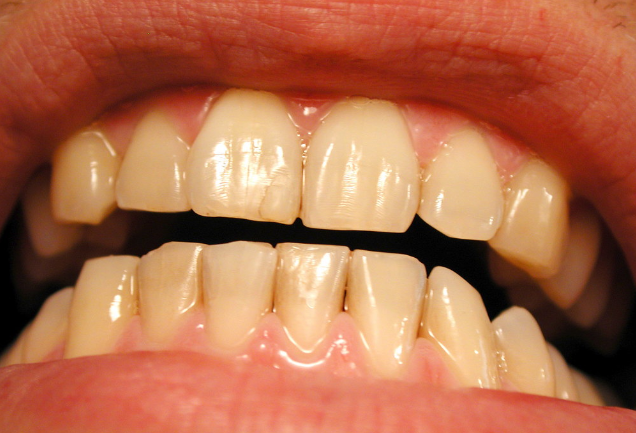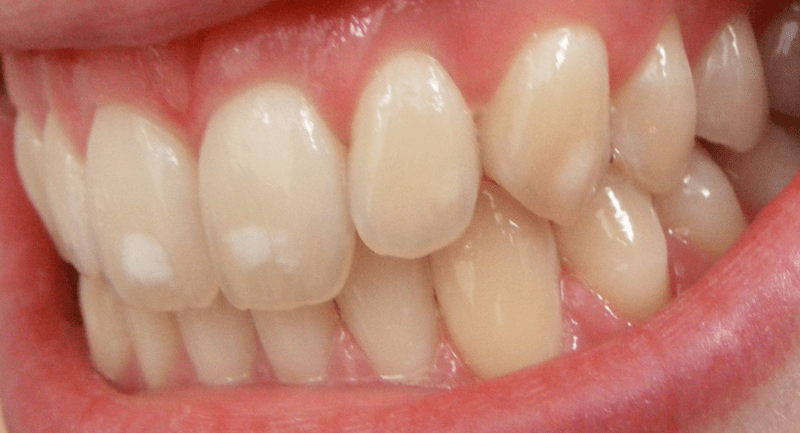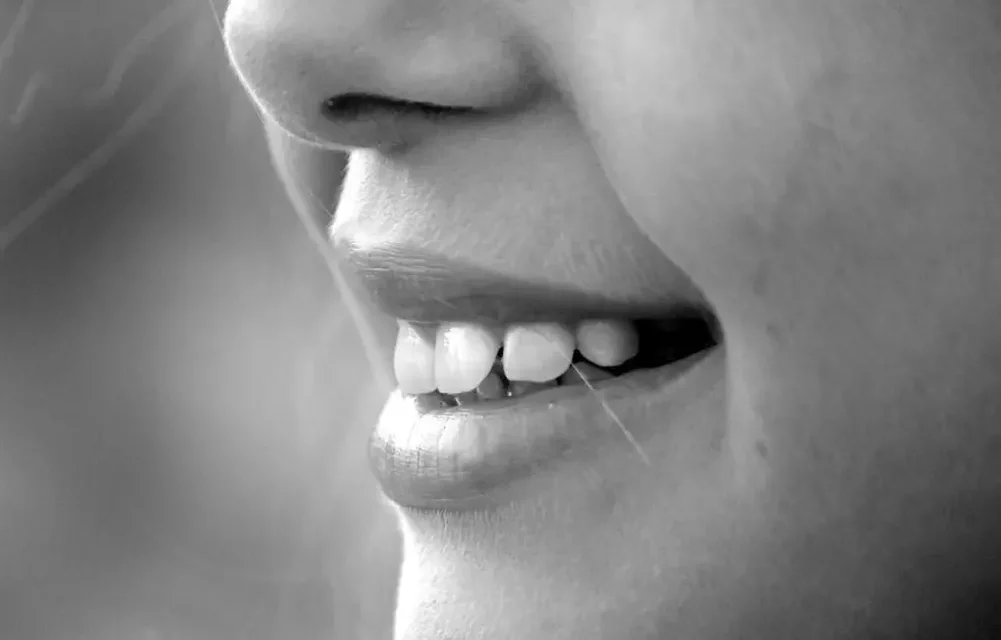We all want to have perfectly white, sparkling teeth, but the truth is that over time, our teeth may lose their brightness and become slightly yellow or even dark brownish. Teeth discoloration is a common dental concern, and it can happen due to various reasons, from genetics and aging to lifestyle habits and medical conditions. But what does your tooth color mean?
In this blog post, we’ll take a closer look at different types of teeth discoloration and what is considered a “normal color” when it comes to your teeth.
What are “normal colored” teeth?
Tooth enamel’s natural color varies from grayish white to yellowish white. Genetics plays a significant role in determining the natural color of your teeth. Other factors, such as diet, can also affect the color. For example, excessive coffee, tea, and red wine can lead to yellower teeth.
Additionally, poor oral hygiene can cause discoloration of the teeth. The accumulation of plaque and tartar on your teeth can cause them to appear yellow, brown, and even black.
Your tooth enamel becomes thinner as you age, making the underlying yellow dentin more visible. Dentin is naturally yellow, so your teeth may have more of a yellow tint over time. This is why it’s essential to maintain healthy oral hygiene habits throughout your life to keep your teeth looking their best.
Regarding tooth color, it’s crucial to note that there is no one-size-fits-all answer. People have different natural tooth colors, and not everyone’s teeth will be the same shade of white. Teeth can also differ in color due to variations in the thickness and texture of the tooth enamel, which is perfectly normal.
Now, let’s dive into different teeth colors and what potentially causes them.
Yellow Teeth

First, let’s understand why our teeth become yellow. Our teeth are covered in a hard, protective layer called enamel. Over time, this layer can wear down, exposing the underlying dentin, which is a naturally yellow color. Additionally, the consumption of certain foods and drinks, such as coffee and tea, can stain our teeth. Smoking and poor oral hygiene can also contribute to the discoloration of teeth.
Tooth discoloration or yellow teeth can occur for various reasons, including age and genetics. If you notice sudden and severe discoloration, it may be a red flag for an underlying dental issue, and you should consult a dentist.
It’s essential to maintain proper oral hygiene to prevent yellowing of teeth and dental issues. Brushing your teeth at least twice a day, flossing regularly, and using mouthwash can go a long way in preventing discoloration and keeping your teeth healthy. Additionally, avoid smoking and limit your intake of staining foods and drinks.
Brown teeth
Brown teeth are less common than yellow teeth, but they can be more severe. Brown teeth may indicate that the enamel has eroded, exposing the dentin layer underneath, which is naturally yellowish. This can happen due to acidic foods or drinks, aggressive brushing, or teeth grinding.
There are several factors that can lead to brown discoloration. Let’s explore the most common ones.
Diet
One of the most common is diet. Foods and drinks like coffee, tea, red wine, and some tobacco products can all cause staining and discoloration in the color of your teeth.
Poor Dental Hygiene
Poor dental hygiene can also be a culprit. If you don’t brush and floss regularly, plaque and tartar buildup on your teeth can lead to discoloration over time.
Genetics
Another possible cause of brown teeth is genetics. Some people are just born with naturally darker teeth than others, which can be due to genetic and environmental differences.

Medications
Certain medications can also cause brown or yellow teeth as a side effect. If you’re experiencing this, talk to your doctor about alternative options.
It’s worth noting that brown teeth don’t always mean you have poor dental health. If the discoloration is limited to the outer layer of your teeth, known as the enamel, it’s often just a cosmetic issue.
However, if the discoloration falls through tooth enamel or deeper into the tooth and affects the other dentin underneath it, it can indicate a more severe problem. If left untreated, this can lead to tooth decay, gum disease, and even tooth loss. Always contact your dentist if you have concerns about brown colored teeth.
Gray teeth
Gray teeth are rare and may indicate a serious dental condition. It’s possible that graying teeth is caused by the tooth pulp having died or that there is an abscess or infection in the tooth root.
If you have gray teeth, you should see your dentist as soon as possible to diagnose the problem and prevent further damage.
Gray teeth could also be a sign of poor oral hygiene, aging, or certain medical conditions. Gray teeth typically result from stains on teeth, which are either external or internal. External stains result from consuming certain foods and drinks such as tea, wine, coffee, chewing tobacco, and dark-colored fruits.
While external stains are typically harmless, internal staining could cause concern and indicate poor dental health. Internal staining could result from various root canal issues, certain medications, tooth decay, or fluorosis.
How to determine if gray teeth indicate poor dental health?
It is critical to visit a dentist to determine if your gray teeth are a sign of poor dental health. A dental professional can help identify the cause of your teeth’ discoloration and recommend the best treatment for your situation.
If your gray teeth are due to poor dental hygiene, the dentist may recommend a deep cleaning or scaling to remove any built-up plaque buildup and tartar. If the cause is internal staining, a dentist may recommend veneers, crowns, or bonding to resolve the issue.
White Spots
White spots on your teeth can be both a cosmetic and a health concern. White spots may be happening because the enamel on white teeth is decalcifying, meaning that the minerals that strengthen your teeth are leaching out.

This can happen due to excessive fluoride intake, poor nutrition, or acid reflux disease. If you have white spots on your teeth, your dentist may suggest remineralizing treatments, such as fluoride varnishes or calcium supplements.
There are several factors that can lead to white spots, but let’s focus on the most common ones.
Fluorosis:
One of the most common causes of white spots on teeth is fluorosis. Fluorosis occurs when children are exposed to too much fluoride during critical stages of tooth development. This overexposure can cause white spots on teeth, ranging from a light yellow color barely noticeable to serious discoloration.
In some cases, fluorosis can even cause brown spots on teeth. You must speak with your dentist if you suspect you or someone you know may have fluorosis.
Enamel Hypoplasia:
Enamel hypoplasia is a condition in which enamel formation is inhibited during tooth development. This can cause white or brown spots on teeth and can even result in tooth decay.
A variety of factors, such as malnutrition, bacterial infections, or fevers, can cause enamel hypoplasia. If you notice white spots on your teeth, seeing your dentist immediately is important.
Poor Oral Hygiene:
Poor oral hygiene is one of the most common causes of white spots on teeth. If you don’t brush and floss your teeth regularly, plaque can build up on your teeth. Plaque is made up of bacteria, which can erode the enamel on your teeth and cause white spots. To prevent white spots due to your poor oral health hygiene, make sure you brush and floss your teeth regularly.
Crowns and Braces:
White spots can appear on teeth due to dental work such as crowns or braces. Bacteria can accumulate around these fixtures, leading to white spots. To prevent white spots due to dental work, maintain good oral hygiene practices. Make sure to brush and floss around your dental fixtures regularly.
Demineralization:
Demineralization occurs when harmful acids in your mouth cause the loss of minerals from your teeth. This can result in white spots or even cavities. One of the leading causes of demineralization is a diet high in sugar and acid. To prevent demineralization limit your sugar and acid intake and practice good oral hygiene
Blue or purple teeth:
Blue or purple teeth are extremely rare and may indicate a medical emergency. Blue or purple teeth may mean that the tooth pulp is dying or a blockage in the blood vessels. If you notice sudden discoloration of your teeth, especially if it’s accompanied by pain or swelling, seek emergency dental care immediately.
Here are a few other causes of blue or purple teeth:
- Certain medical treatments, such as early antibiotic use, medications that treat high blood pressure or even chemotherapy
- Foods and drinks high in pigments like blueberries, juices or wine
- Tooth decay
- Raynaud’s disease
Conclusion
The color of your teeth can be more than just a cosmetic concern; it can be a window into your overall dental health. From yellow and brown to gray and even blue, different shades can signify a range of issues, some of which may require immediate attention.
While maintaining good oral hygiene and making lifestyle changes can help prevent discoloration, the best way to understand what your tooth color means is to consult a dental professional. A dentist can provide a comprehensive examination, accurately diagnose any underlying issues, and offer effective treatment options tailored to your needs.

